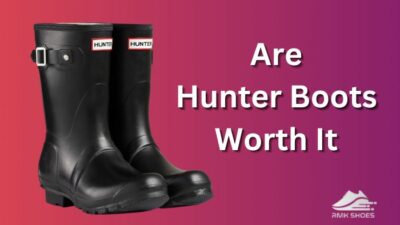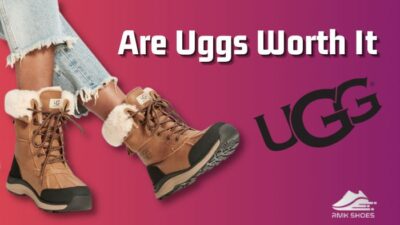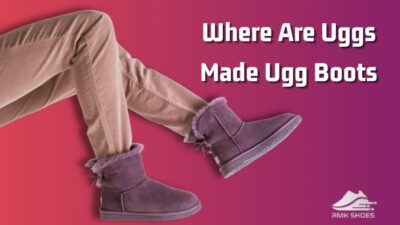Steel toe boots are well equipped to protect your feet from all sorts of danger in your work environment. But can they do it against the cold?
Well, if you’re worried; then don’t be! I’ve used all my knowledge and expertise to come up with this article that’ll answer all your questions.

So, do steel toe boots make your feet colder?
Not what you were expecting? Let me tell you this; there are lots of ways to wear steel toe boots in the winter. Relieved much? Read each line carefully to know it all.
Do Steel Toe Boots Make Your Feet Colder?| Answered
I think this really shouldn’t come as a surprise. Since, I got all these questions regarding this topic so why not answer it! After all, it’s my duty.
Steel toe boots do make your feet colder in cold snowy conditions. Why wouldn’t it? Steel is a thermal insulator, it reduces the warm temperature inside your boots by absorbing the colder one from outside. Making your feet colder in the process.
But, I get the cause of your confusion. I mean they’re sturdy boots made up of leather, and the steel cap is embedded inside the material. So, it’s logical to have this question in your mind.
But, thanks to the natural property of steel to conduct both heat and cold; wearing them in the cold can be hazardous for your feet.
Too much cold restricts blood circulation and causes your feet to go numb. This happened to me once. I wasn’t wearing a proper pair of winter boots and my feet became so numb, I had to warm them up near a bonfire.
But the good part was, I wasn’t wearing a pair of steel toe boots. So, what could have happened to my feet; If I was wearing a pair of steel toe boots?
If I was wearing a pair of steel to boots (in the cold) without any kind of insulation, then I could have suffered from frostbite, swelling (if the boots were tight), pain, and blisters.
So, if you had any prior confusion regarding this topic; I’m sure it’s gone by now. Steel toe boots will make your feet colder. But hey! There are solutions, you know what to do. Scroll.
Go through our epic guide How Much Do Steel Toe Work Boots Weigh.
Can You Wear Steel Toe Boots In The Cold?
A big yes. You can wear steel toe boots in the cold, provided that they’re well insulated. But, if there isn’t any insulation or it’s relatively poor, then you can wear thick socks to prevent the cold from getting to your feet. And, the materials need to be less breathable, relatively.
I told you there would be solutions! So, cheer up pow. You can use steel toe boots in the cold; but, certain conditions have to be met.
Let me tell you an interesting fact; steel toe safety boots are quite winter friendly boots, apart from the steel cap that is.
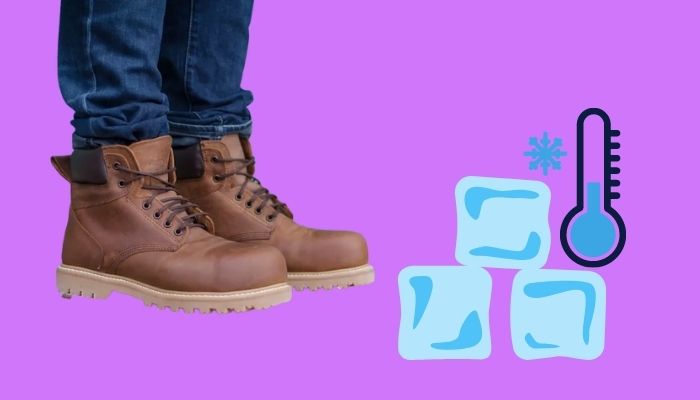
These boots are lightweight, which doesn’t affect your mobility. They are also water and puncture proof. To top things up, you get excellent traction on slippery snowy surfaces.
So, it seems steel toe boots aren’t that underqualified when it comes to the cold. If you have steel toe boots that aren’t insulated, you can pair them up with thick socks to make winter-friendly.
But, if you have steel toe boots that are well insulated then you’ve nothing to worry about. You should be able to use them from the get-go.
Other than steel toe boots, composite toe are a great alternative when it comes to safety boots in the cold. They’re well insulated and the protective toe guard is generally made with non-metallic materials.
Remember, if you stay in a stationary position for a long time in your steel toe boots (without thermal insulation), then your blood circulation will decrease; resulting in numb feet.
You’ll need to be in motion and the combination of thick socks will only work upto a certain time, after that you’ll need to change. It’s more of a temporary solution.
If you want a permanent solution, then steel toe boots with proper thermal insulation should be of your main priority.
Check out our separate post: Are Steel-Toe Boots Heavy.
Factors To Consider For Good Winter Work Boots
Just because it’s winter there’s no excuse for you to skip your work and stay wrapped in your warm blanket. Can’t escape your duty and rest on your saddles, can you now?
If your job requires safety boots, especially in the winter, then my friend; you’ll need to keep some factors in mind.
Here are the factors to consider for good winter work boots:
Thermal Insulation
Right about now, you should know the importance of insulation in your work boots for colder temperatures. Without them you won’t be able to operate in the cold for a long time.
Your thick socks will only back you up for a certain amount of time. So, if you want to avoid any sort of issue at your workplace then get yourself work boots with good insulation.
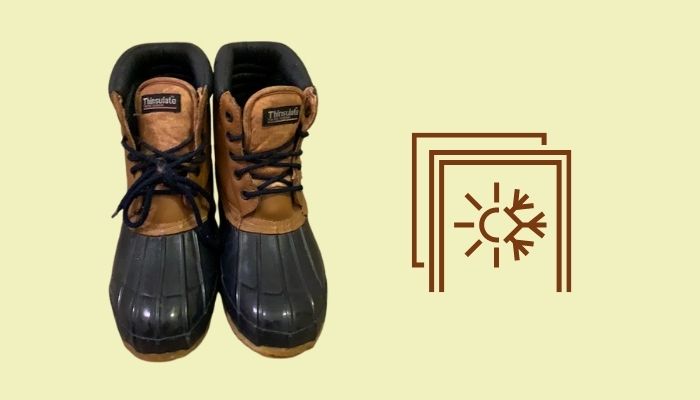
Also read, Composite Toe Vs Steel Toe Boots.
Comfort
Let me tell you a straight fact! If your footwear isn’t comfortable, you won’t be able to wear them for a long time; especially if your boots are steel toe. These boots come with sturdier construction and steel cups, which can give your toes a terrible time if they aren’t the correct size.
Make sure you feel comfortable in your steel toe boots and you have enough wiggle room to last the entire day.
Shaft Height
If your area involves thick layers and dense layers of snow, then the shaft height has an important role to play. The higher the shaft the better are your legs protected from the nasty cold of the snow.
Size
You like a certain pair of boots, but the size isn’t right. But, you end up buying it anyway. Then you start wearing it, after a while you find it extremely difficult to wear them. And, that’s how your money goes down the drain.
So, no matter how much you like a pair of boots; it needs to be of the right size. Especially if they are work boots. Trust me, you don’t want to mess up with the size of your work boots.
Waterproof
Do you want melted snow to seep through your boots to your skin and give you a bone chilling cold? If not, then get yourself a pair of work boots that are waterproof or water resistant to a very good level.
Temperature Rating
I should’ve put this one further up the countdown. Temperature is vital as it determines whether or not your boots are suited for the cold temperature of your area. So, when you go shopping, remember this one. It applies to all kinds of winter boots.
Follow our other guide to know Is Non-Metallic Toe The Same As Steel Toe.
What Socks Should You Wear With Steel Toe Boots In The Cold?
So, if you’re planning to wear steel toe boots with winter socks then it’s a clear indication that your work boots aren’t thermally insulated. But, do all socks work? This is what I’m going to tell you now.
Here are the socks you should wear with your steel toe boots in the cold:
Cotton Socks
Cotton socks make total sense doesn’t it? I mean they’re fluffy, provide warmth and are quite popular among consumers because of their price. But, do they really make a good match with steel toes?
The answer is no! Because they trap moisture. Now, combine that with steel toes; it’s double trouble. So, if you want to wear socks with your steel toes, avoid cotton socks.
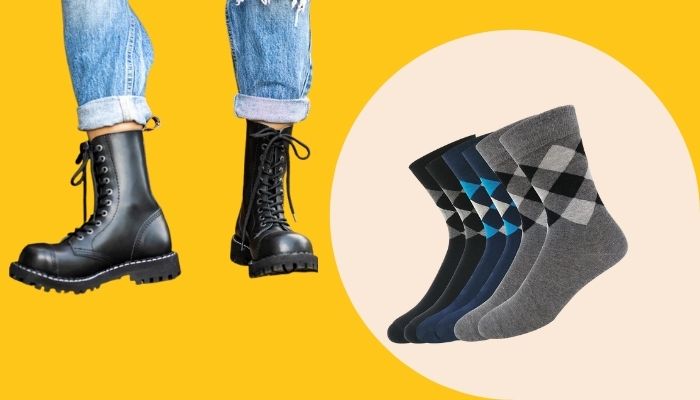
Merino Wool Socks
Woolen socks are good, but merino wool socks are great; especially for steel toes without proper insulation. The main reason is, they absorb moisture and keep your feet clean, dry, and warm. Simply put, merino wool socks are the best.
Thick Socks
Another popular option for your steel toes is thick socks. But keep in mind, apart from keeping your feet warm, they do need extra room. And, you don’t want a tight fit in your steel toes as your feet may suffer from fatigue.
So, if you’re planning to wear thick socks with your steel toes; make sure there’s extra room for snug and comfy fit.
Also, check out my new post on how to Distress Leather Boots.
Parting Thoughts
Steel toe boots do make your feet colder due to the presence of the steel cup which is a good conductor of cold. Another reason is the absence of thermal insulation. Steel toes with thermal insulation won’t make your feet cold.
However, you can wear your steel toes with merino wool socks or thick socks. You can also wear composite toe boots, as they’re an excellent alternative.
That’s all from me, regarding this topic. I really hope you’ve had your answer. If no, then feel free to let me know about my failings down in the comment section below. I’d love to hear from you too. Until then, take care.

